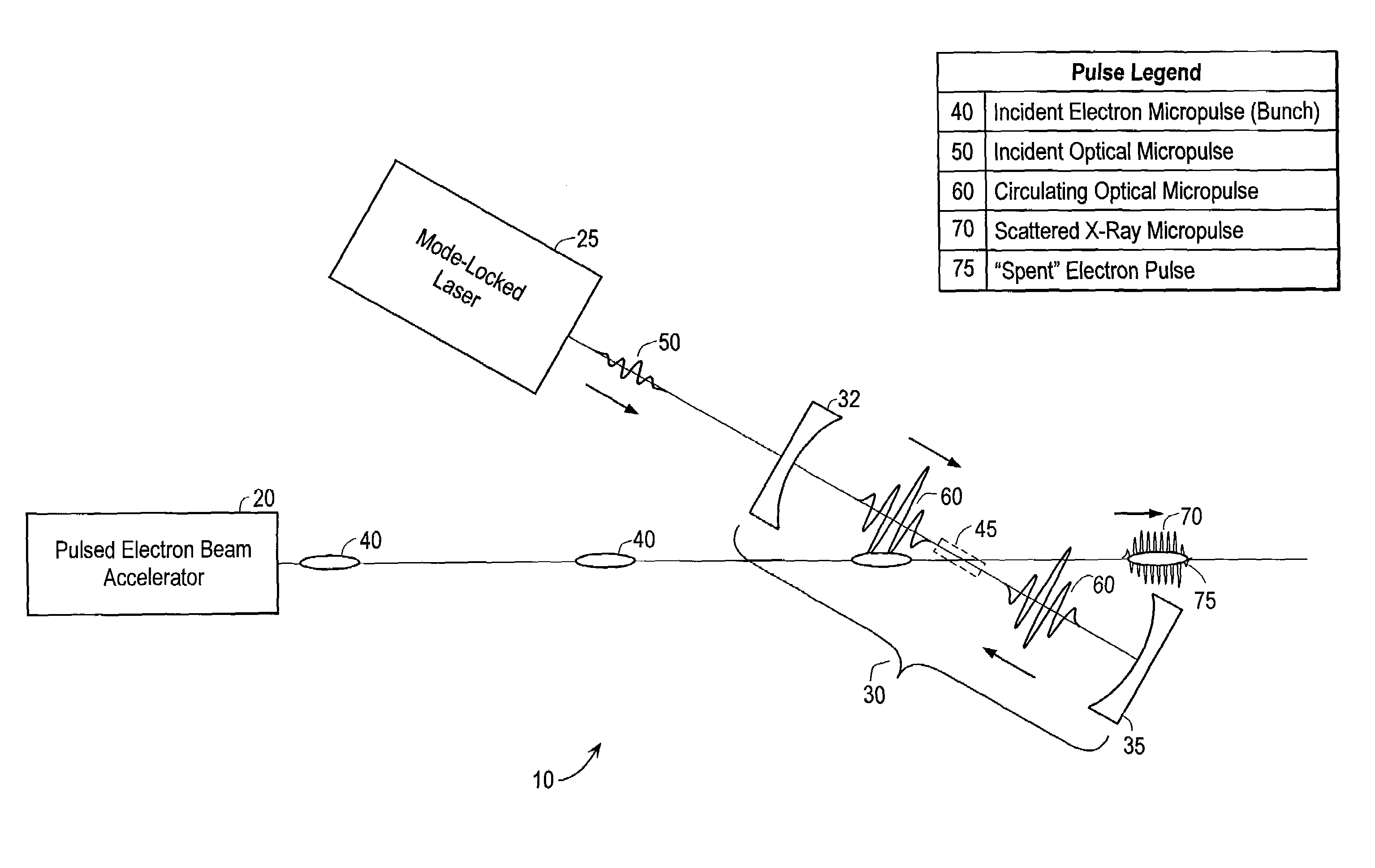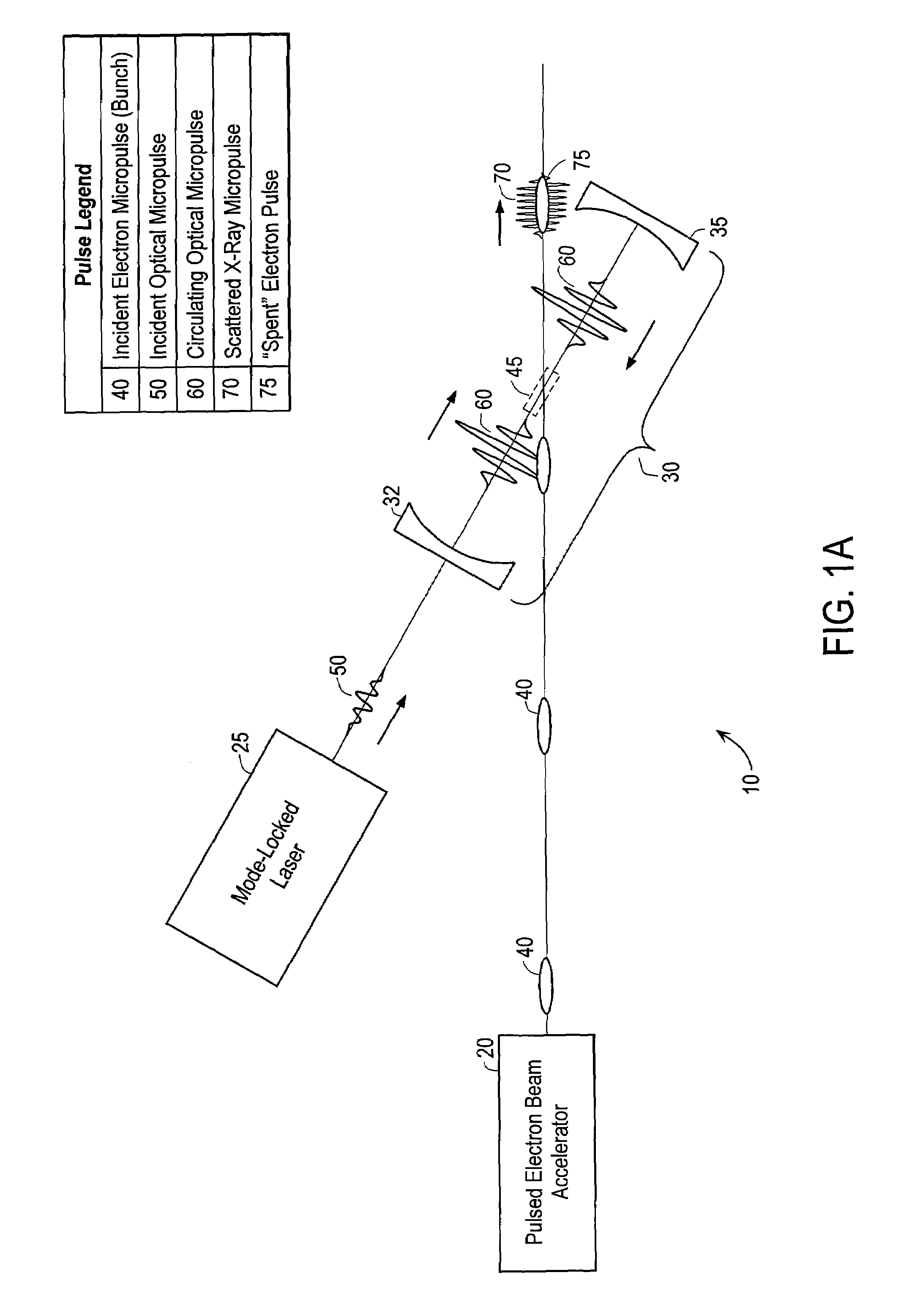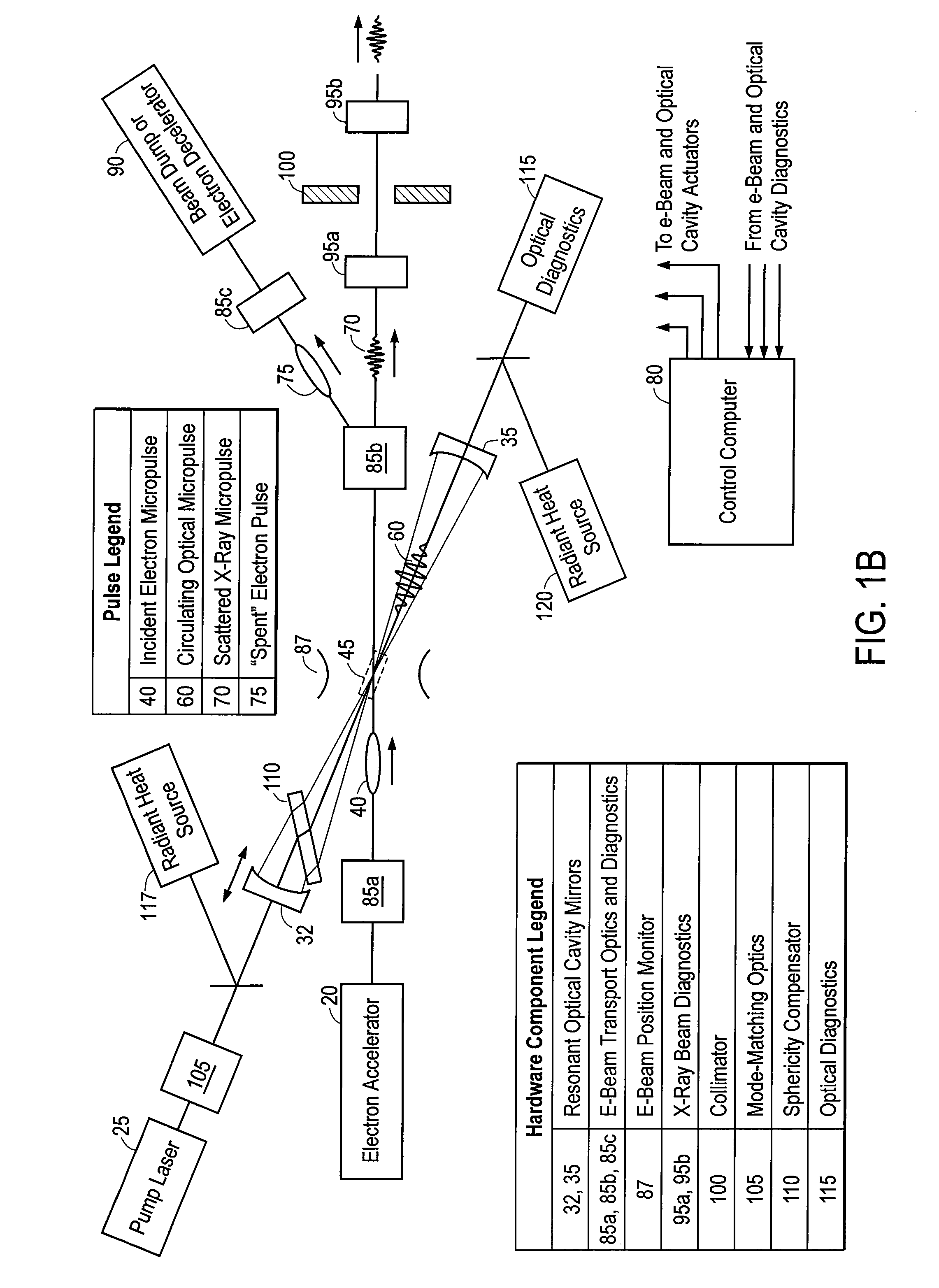High efficiency monochromatic X-ray source using an optical undulator
a monochromatic x-ray source and undulator technology, applied in the direction of x-ray tubes, irradiation devices, nuclear engineering, etc., can solve the problems of inability to meet the requirements of a single wavelength, etc., to achieve the effect of reducing the energy required for operation of such sources, reducing the size, cost and operating expense, and reducing the size of the a monochromatic x-ray source undulator-based x-ray source monochromatic x-ray source and monochromatic x-ray source and optical undulator-based x-ray source, high efficiency, a high efficiency of x-ray source, a high efficiency of x-rays and other electromagnetic radiation production field, which is applied in the field of electromagnetic radiation radiation radiation radiation radiation x-ray radiation radiation radiation x-ray radiation x-ray radiation x-ray radiation x-ray radiation x-ray radiation x-ray radiation x-ray radiation x-ray
- Summary
- Abstract
- Description
- Claims
- Application Information
AI Technical Summary
Benefits of technology
Problems solved by technology
Method used
Image
Examples
Embodiment Construction
Basic Configuration and Operation
[0044]In brief, embodiments of the present invention enable the generation of x-rays and other energetic electromagnetic radiation (short wavelengths including ultraviolet and gamma rays). These embodiments can provide the bright, near-monochromatic, high average-power and peak-power x-ray beams required for x-ray crystallography, medical radiography and radiotherapy and other x-ray and gamma ray imaging systems, and for research in nuclear and high energy physics.
[0045]FIG. 1A is a high-level schematic of the primary elements of a representative system 10 according to an embodiment of the present invention. The primary elements of the system include an electron source such as a pulsed electron beam accelerator 20, a pulsed light source such as a mode-locked pump laser 25 (or multiple pump lasers), and an optical cavity 30, which is operated as an optical resonator. Cavity 30 is shown schematically as including opposed concave mirrors 32 and 35. In b...
PUM
 Login to View More
Login to View More Abstract
Description
Claims
Application Information
 Login to View More
Login to View More - R&D
- Intellectual Property
- Life Sciences
- Materials
- Tech Scout
- Unparalleled Data Quality
- Higher Quality Content
- 60% Fewer Hallucinations
Browse by: Latest US Patents, China's latest patents, Technical Efficacy Thesaurus, Application Domain, Technology Topic, Popular Technical Reports.
© 2025 PatSnap. All rights reserved.Legal|Privacy policy|Modern Slavery Act Transparency Statement|Sitemap|About US| Contact US: help@patsnap.com



